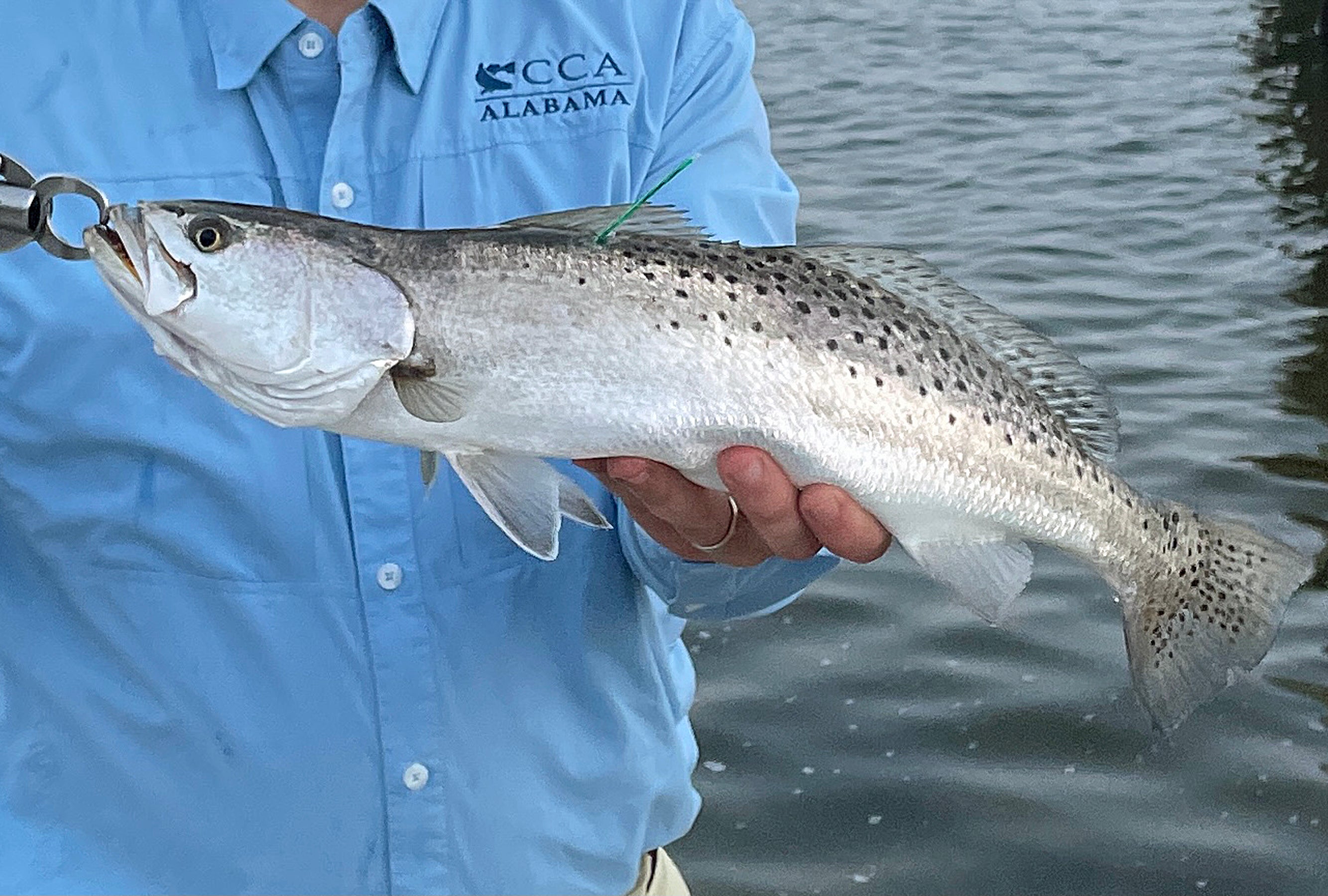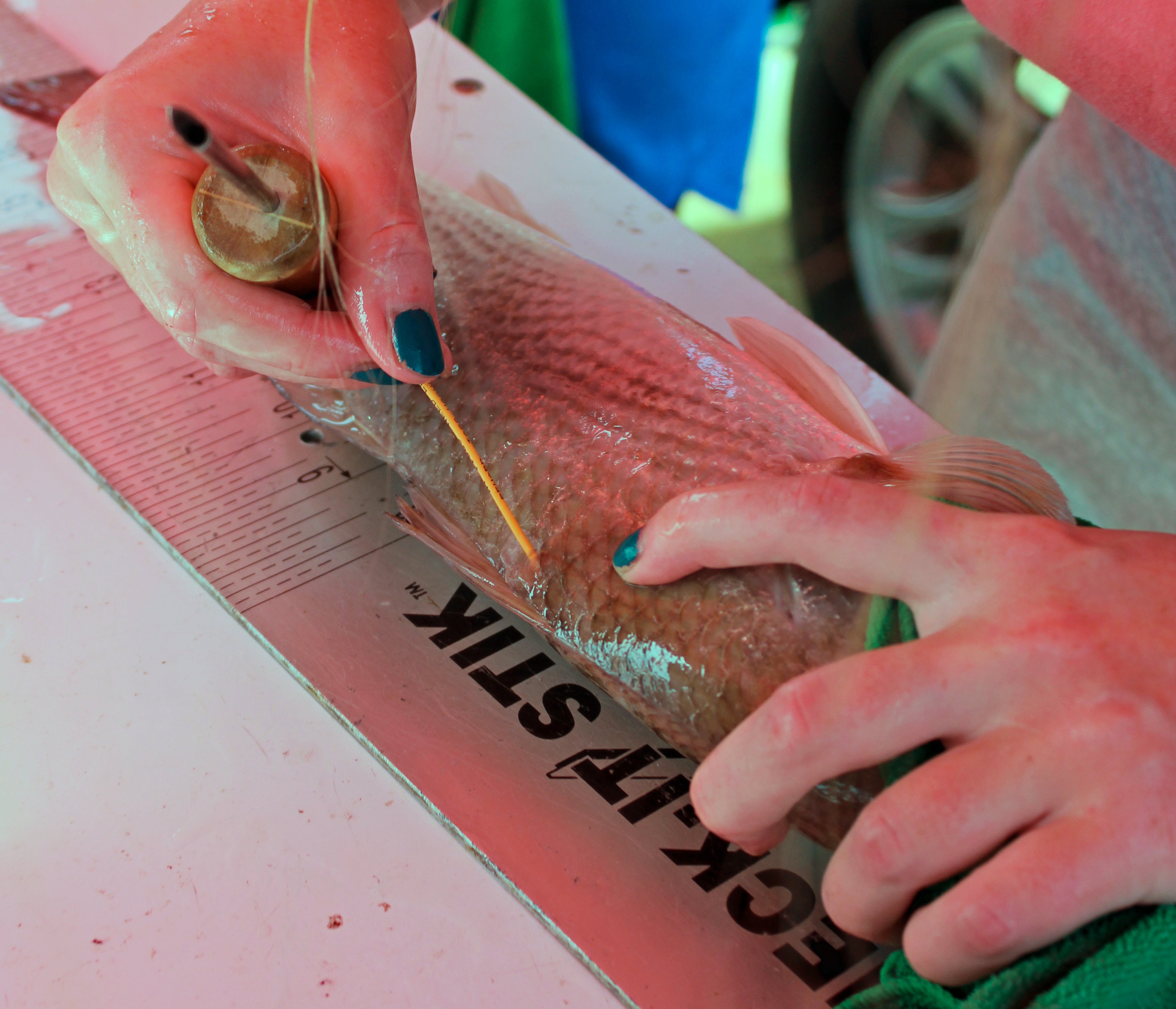By DAVID RAINER, Alabama Department of Conservation and Natural Resources
Thanks to a tagging program started by CCA Alabama in 2017, Alabama anglers who target speckled trout and redfish know a great deal more about the movement and growth of these prized inshore species.
The TAG Alabama program, which is compiled and analyzed by the University of South Alabama (USA) School of Marine Sciences and Dauphin Island Sea Lab, enlists CCA (Coastal Conservation Association) members to tag trout and redfish (red drum) and rewards anglers who file a report after a tagged fish is recaptured.
For the first time in a year because of COVID restrictions, CCA Alabama was able to hold tagging seminars last week in Birmingham and Daphne to give interested anglers guidance on how to properly tag the fish to ensure the trout and redfish are not injured and the tag is properly secured.
CCA Alabama Executive Director Blakeley Ellis and USA graduate student Dylan Kiene teamed up to provide instruction in safe tagging techniques and an update on tagging program data.
Kiene, who is studying several inshore species at the Dauphin Island Sea Lab Fisheries Ecology Lab, said speckled trout seem to be constant travelers, but redfish are unpredictable.
“We had one redfish tagged at Dauphin Island that went to Pensacola in about 30 days,” Kiene said. “We had one redfish tagged near one of the islands in the Mobile River that went all the way to Lake Pontchartrain in Louisiana in 130 days. On the other hand, we had one red drum that was recaptured three times by Capt. Richard Rutland in the same spot, the first time in 2017 and twice in 2018.”
Kiene said his program predecessor, Reid Nelson, observed little to no movement from red drum in certain locations.
“When Reid was doing acoustic work on red drum, he was tagging fish in Dog River and Fowl River,” Kiene said. “One of the things you look for when you’re doing acoustics is that if a tag is detected constantly on the same receiver, you may assume the fish is dead. That was what he thought until some of the fish were recaptured in the same spot. They were literally within 100 yards from the spot where they had been tagged. They had enough food. They were happy.
“But speckled trout are basically always on the move. You’ll catch them in the same spots at the same time of the year, but they’re always moving.”
New to the TAG Alabama program is the bull redfish tag that was handed out to participants last week. Fish larger than 26 inches are considered bull reds, but Kiene would prefer to see anglers tag fish 30 inches and larger.
“With the bull red tags, once we get enough of these out, it’s going to be really interesting to actually see if these fish are going offshore where they’re supposed to be spawning or going up into the Delta,” Kiene said.
Ellis said CCA Alabama also recently approved funding for USA Marine Sciences to do a study on offshore bull reds with acoustic and satellite tags.
Anglers participating in the TAG Alabama program can report tagging data through the Fishing Chaos app, at tags.usouthal.edu, which is best used on a computer, or 1-800-372-5950. Kiene said the Fishing Chaos app blurs the angler’s tag capture location data to keep that information private.
Ellis said the tagging program is for legal-sized fish only. For speckled trout, the minimum total length is 15 inches. For redfish, the minimum total length is 16 inches. He said when a fish is recaptured, two reports are sent via email, one to the angler who tagged the fish and one to the angler who recaptured the fish.








